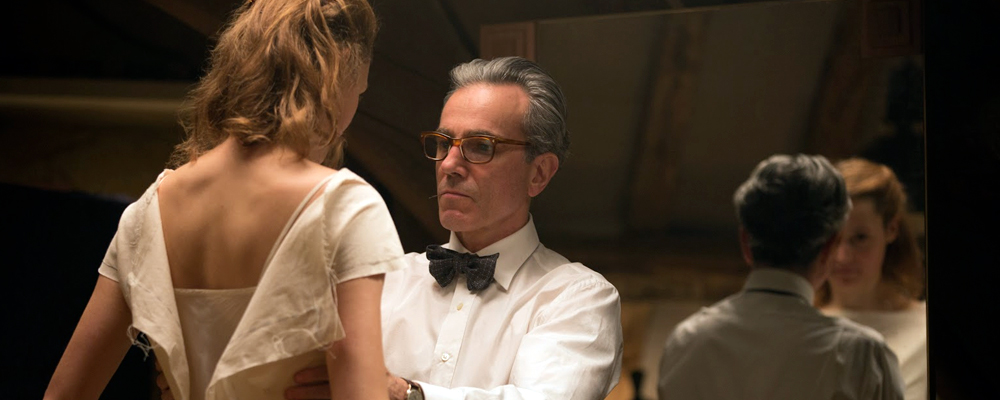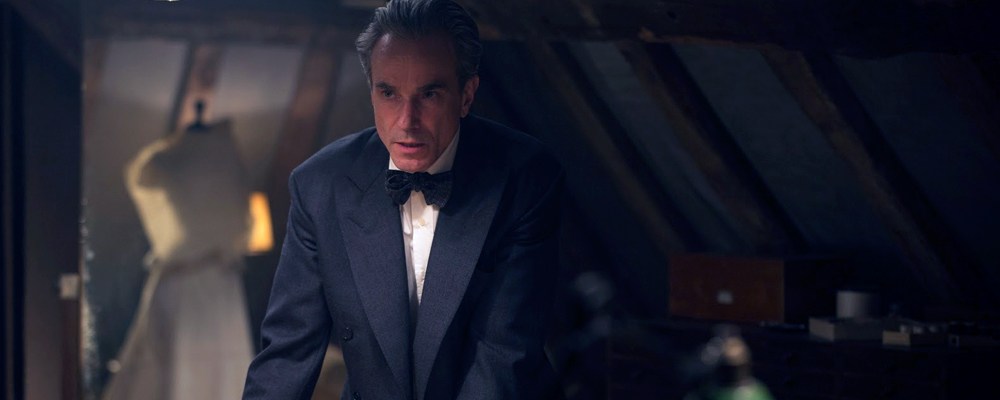Daniel Day-Lewis Weaves a Memorable Performance in ‘Phantom Thread’
Alci Rengifo
“Phantom Thread” is a visually lush exploration of personalities dueling within a gilded cage. The heart of the film is a convincingly icy, toxic performance by Daniel Day-Lewis, which is so good it transcends the sparse nature of the script. He creates a subtle atmosphere of dread, but dread based on sheer personality as opposed to gimmicky plotting. Director Paul Thomas Anderson has always specialized in creating characters memorable in their psychological makeup, including Lewis’s Oscar-winning oil tycoon in “There Will Be Blood.” In “Phantom Thread” they craft a world of posturing, where the refined world of a high-end dressmaker is a mere façade for unbearable neurosis and the will to dominate others. We are terrified and fascinated as we watch these lives being lived onscreen.
Lewis plays Reynolds Woodcock, a renowned dressmaker in 1950s London with an iron-set routine to his daily life. One morning during breakfast he meets Alma (Vicky Krieps), who is much younger but with an alluring, mature personality mingled with youth’s naivety. Woodcock takes Alma as both lover and companion in his studio. Watching over the studio is Woodcock’s longtime second in command, the no nonsense Cyril (Lesley Manville), who tries to instruct Alma on Woodcock’s specific likes and dislikes. Alma becomes Woodcock’s muse in a sense, standing in for his fitting sessions, inspiring cuts and shapes. But as the relationship continues Alma begins to see the darker side of Woodcock’s personality. He’s a difficult man to live with, demanding in the smallest, inconsequential things (in one scene he seems to mentally recoil at her chewing). The story’s main theme seems to be the question of just how much she can take.
This isn’t really a film about a particular plot. Its narrative is in the tradition of postmodern ambiguity. Anderson’s screenplay is more a set of moments, of passages where we get to know these characters and their behaviors. Visually this is one of the year’s most elegant dramas and the first movie Anderson has photographed himself. He basks in rich shadows and sensuous colors, creating a gothic atmosphere where beauty is a mask for the unappealing. There are hints here of the look you find in films like Alfred Hitchcock’s “Rebecca” or Martin Scorsese’s “The Age of Innocence” (also starring Lewis). The moments where we see Woodcock at work, putting a dress together or supervising the production of a wedding dress for royalty, are fascinating and opulent. Yet it never looks like a movie aping a fashion magazine, there is a stark realism in the way Anderson captures the hard work of Woodcock’s profession, the perfectionism and attention to detail. The music score by Jonny Greenwood is a combination of his usual, sparse notes with orchestral flourishes reminiscent of classic 1950s scores. The film succeeds best as a work of atmosphere. Anderson is fantastic at setting up a sense of time and place. The era of the story is conjured in such a vivid fashion that few filmmakers achieve.
The key component in a movie of this type is the pairing of leads. Because they themselves are the story, the actors interpreting this world are crucial. Daniel Day-Lewis, in what is apparently his retiring role, again demonstrates why he is a modern great. His Woodcock is a creature of selfish egotism. He believes his own image a little too much and speaks with that self-righteous tone of the hopelessly egotistic neurotic. In a sense Woodcock is a riff on the stereotypical perfectionist artist, producing admirable work but not much fun to live with. In one scene Alma brings him tea while he works, he scolds her and when she leaves with the tea he adds, “the interruption will stay with me.” He pats his jacket breast, revealing that he has sown a lock of his mother’s hair into it, to keep her close. With a lesser director this would serve as the introduction to one of those weirdos who later turns out to be a serial killer, but with Anderson it is a fascinating detail in the portrait of an extreme personality. Krieps is sympathetic as Alma, who is quite bright, and wants to please Woodcock, but realizes this is the kind of personality that can’t be met half-way. She never lets him overpower her as an individual. “Phantom Thread” can be seen as a portrait of a relationship based on shallow connections. Some critics have described it as a commentary on toxic masculinity. This is very possible, even if Anderson’s approach is vague (which has been his signature style since 2012’s “The Master”). Woodcock certainly makes the relationship toxic. He is scary because of his rigid habits and overly-demanding fits. We are left wondering about what exactly is Alma’s motivation for staying attached to this man. His talent is undeniable, but there’s nothing loveable about him. It is the idea of Alma that seems to entice him, but not the individual herself.
“Phantom Thread” continues the eclectic career of one of the most renowned of modern directors. Anderson burst onto the scene with the energetic, feverish dramas “Boogie Nights” and “Magnolia,” then made a wonderful offbeat romance with Adam Sandler named “Punch-Drunk Love.” After his 2008 epic “There Will Be Blood,” Anderson has now settled in a kind of low-key, arthouse style which reached a peak with 2014’s “Inherent Vice.” That film could feel rambling at times, never finding a proper rhythm or flow. “Phantom Thread” is ambiguous but not confusing, allowing us to be fascinated by simply observing these two people, pulled together by life into a duel of wills, where love becomes a poisonous dish served cold.
“Phantom Thread” opens Dec. 25 in select theaters.



